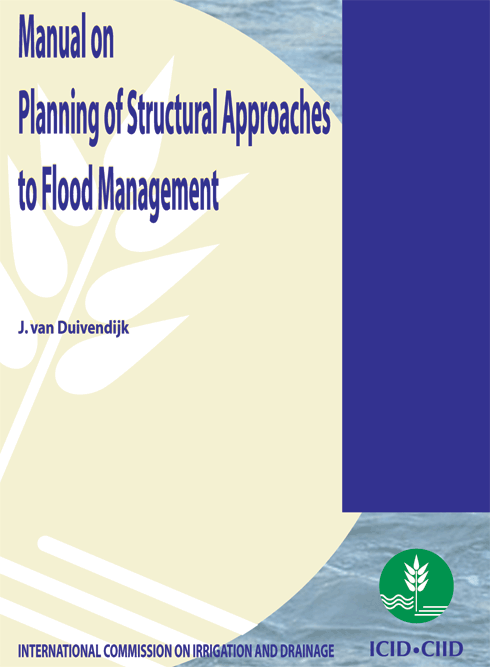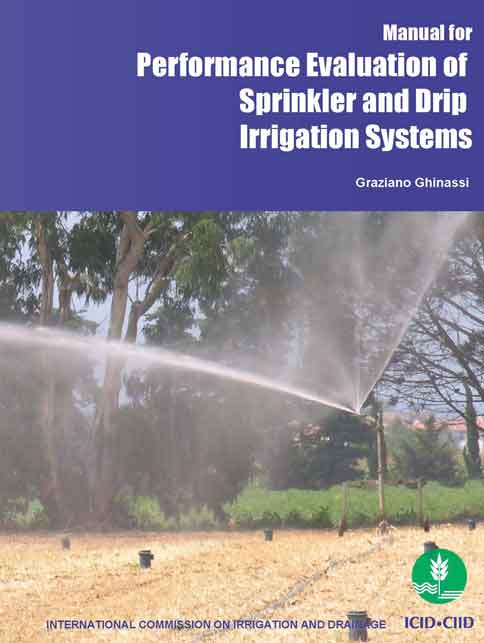DIRECT MEMBER - COMPANY

Soil Health Management
Practices of soil health management include:
- Enhance organic matter: Practices that increase organic matter include: leaving crop residues in the field, choosing crop rotations that include high residue plants, using optimal nutrient and water management practices to grow healthy plants with large amounts of roots and residue, growing cover crops, applying manure or compost, using low or no tillage systems, and mulching.
- Avoid excessive tillage: Tillage is used to loosen surface soil, prepare the seedbed, and control weeds and pests. But tillage can also break up soil structure, speed the decomposition and loss of organic matter, increase the threat of erosion, destroy the habitat of helpful organisms, and cause compaction. New equipment allows crop production with minimal disturbance of the soil.
- Manage pests and nutrients efficiently: Efficient pest and nutrient management means testing and monitoring soil and pests; applying only the necessary chemicals, at the right time and place to get the job done; and taking advantage of non-chemical approaches to pest and nutrient management such as crop rotations, cover crops, and manure management.
- Prevent soil compaction: Compaction reduces the amount of air, water, and space available to roots and soil organisms. Compaction is caused by repeated traffic, heavy traffic, or travelling on wet soil. Deep compaction by heavy equipment is difficult or impossible to remedy, so prevention is essential.
- Keep the ground covered: Ground can be covered by leaving crop residue on the surface or by planting cover crops. In addition to ground cover, living cover crops provide additional organic matter, and continuous cover and food for soil organisms. Ground cover must be managed to prevent problems with delayed soil warming in spring, diseases, and excessive build-up of phosphorus at the surface.
- Diversify cropping systems: Diversity across the landscape can be increased by using buffer strips, small fields, or contour strip cropping. Diversity over time can be increased by using long crop rotations. Changing vegetation across the landscape or over time not only increases plant diversity, but also the types of insects, micro organisms, and wildlife that live on the farm.
Related items you may like

Workbody

Workbody

Event

Publications

Publications

Publications

Publications

Publications

Publications

Publications

Publications

Publications

Publications

Publications

Publications

Publications

Publications

Publications

Publications

Publications

Publications

Publications

Publications

Publications

Publications

Publications

Publications

Publications

Publications

Publications

Publications

Publications

Publications

Publications

Publications

Publications

Publications

Publications

Publications

Publications
Irrigation
Sources of Irrigation
Irrigation History +
Sources of Irrigation +
IMPROVING SOIL MOISTURE +
Ponds +
Tanks +
Diversion Weirs +
Dams and Reservoirs +
Groundwater +
Conjunctive Water Use +
Wastewater +
Poor Quality Water +
Application of Irrigation water
Canal Irrigation +
Flood Irrigation +
Deficit Irrigation +
Supplemental Irrigation +
Sprinkler Irrigation +
Drip Irrigation +
Lift Irrigation +
Centre Pivot Irrigation +
Tidal Irrigation +
Micro-Irrigation Technologies for Small Holders +
Automatic Irrigation Systems +
Pressurized Irrigation +
Irrigation in Viticulture +
Purpose of Irrigation
Instruments and implements of Irrigation
Pumps +
Centrifugal Pumps +
Submersible Pumps +
Turbine and Jet Pumps +
Conveying Pipes +
Sprinklers +
Drippers +
Canal Automation Systems +
Irrigation Management
Economics of Irrigation System +
I&D System Types +
I&D Investment Functions +
I&D Management Issues +
Participatory I&D Management +
Equity in Irrigation +
Irrigation Services +
Irrigation and environment
Pollution and Irrigation +
Irrigation and Climate Resilience +
Environmental Aspects of Irrigation +
Environmental Impacts of Irrigation +
Green Lawn Irrigation +
Safe Use of Waste Water in Irrigation +
Organic Agriculture +
Soil Health +
Soil Health Management +
Quality of Irrigation Water +
Capacity Development
Drainage
Drainage Types and Systems
Agricultural Drainage +
Field Drainage systems +
Canal Irrigation and Drainage +
Surface Drainage Systems +
Subsurface Drainage +
Mole Drainage +
Bio-Drainage +
Regional Bio-Drainage +
Drainage Issues
Dictionary - Soil Health Management Terms
- River basin management, Watershed management, or River management
- Belt of soil water
- Interstice, or Void (in a rock, or soil)
- Groundwater management
- Well graded soil
- Soil Science
- Soil
- Soil morphology
- Mature soil
- Immature soil
- Skeletal soil
- Endodynamorphic soil
- Ectodynamorphic soil
- Hydromorphic soil
- Truncated soil
- Residual soil
- Transported soil, or Secondary soil
- Glacial tills, or Glacial soil
- Alluvial soil
- Aeolian soil
- Colluvial soil
- Mineral soil
- Organic soil
- Soil profile
- Soil horizon
- Soil horizon symbols
- Subsoil
- Topsoil, or Surface soil
- Plough soil, Plowsole pan, or Induced pressure
- Plansols, or Planosoils
- Soil texture
- Soil separates
- Soil particle
- Soil structure
- Soil classification
- Soil taxonomy
- Soil series
- Soil type
- Azonal soil
- Intrazonal soil
- Great soil group
- Soil family
- Soil phase
- Soil association
- Soil complex
- Prairie soil
- Black turf soil
- Chestnut soil
- Brown (steppe) soil
- Sierozem or Grey desert soil
- Desert soil
- Laterite soil, or Latosol
- Regur or Black cotton soil
- Mallee soil, Solonized brown soil, Mallisol
- Transitional soil
- Soil consistence, or Consistency
- Air capacity of soil
- Air content of soil
- Mobile soil colloids
- Soil solution
- Unsaturated soil solution
- Saturated soil
- Soil reaction
- Soil moisture
- Soil moisture accretion
- Soil moisture deficit
- Unsaturated soil
- Saturated soil paste
- Unavailable soil moisture, or Unavailable water
- Soil moisture tension, or Moisture tension
- Moisture characteristics (of soils)
- pF of soil water
- Soil water zone
- Soil water deficit
- Soil water tension
- Soil temperature
- Daily range of soil temperature
- Productivity (of soil)
- Lacustrine, Fen soil, or Lowmoor
- Bog soil
- Half bog soil
- Pool soils
- Dal soil
- Dead soils
- Tundra soil
- Rodoorn soils
- Kleiplaat soils
- Schor soils
- Plaat, or Slik soils
- Pik, Knip, or Knik soils
- Saline soil
- Solodif, Soloti soil, Solod, or Soloth
- Acid soil
- Neutral soil
- Sajong soils, or Shachiang soils
- Calcareous soil
- Non-calcareous soil
- Alluvial meadow soil
- Humic gley soil
- Soil horizon of carbonate accumulation
- Soil amendment
- Soil modification
- Soil sterilization
- Soil conditioner
- Watershed management
- Allowable bearing value, or Allowable soil pressure
- Soil classification systems
- Cohesive soil
- Soil-cement lining
- Plastic soil-cement
- Standard soil-cement
- Integrated Water Resources Management
- Catchment management
- Leasing management
- Public service management
- Flood management
- Nonstructural measures of flood management
- Structural measures of flood management
- Economic effectiveness of a flood management system
- Wetted soil percentage
- Available soil water storage
- Soil hydraulic conductivity
- Soil intake (infiltration) rate
- Soil specific gravity or Dry bulk density
- Soil water stress
- Soil water content
- Soil water tension
- Total available soil water storage
- Total soil water storage
- Soil degradation
- Alkaline soil
- Cohesionless soil
- Non-saline alkali soil
- Saline sodic soil
- Saline soil
- Sodic soil
- Subsoil
- Subsoil amelioration
- Unstable soil
- Subsurface drainage, Under drainage, Subsoil drainage, Underground drainage, or Covered drainage
- Drain tile, Field drain pipe, Subsoil pipe, Land pipe
- Soil water head
- Total head, Total hydraulic head or Total soil water potential
- Uniform soil
- Neutron probe, Neutron soil moisture probe (or gauge), Neutron moisture meter, or Neutron scattering probe
- Management account of farm unit
- Efficiency of the resource management
- Soil conservation
- Soil management
- Soil creep, or Solifluxion
- Soil erosion
- Surface sealing (of soil)
- Soil K-factor
- Soil loss equation
- Total potential (of soil water)
- Soil water pressure
- Soil Water Characteristics Curve
- Soil water diffusivity
- Supporting soil conservation practices
- Watershed management
- Pond management
- Pasture management
- Regenerated soil
- Soil binder
- Soil-saving dam
- Soil-saving dike
- Resource management
- Hazardous waste management
- Soil flushing
- Nightsoil
- Renovating soil
- Health
- Water quality management
- Waste management
- Subsoiling
- Soil improvement
- Soil amendment
- Soil conditioner
- Soil sealant
- Integrated pest control, Integrated pest management(IPM)
- Soil injection
- Soil
- Regolith Soil
- Mineral soil
- Muck soil
- Soil structure
- Soil aggregation
- Soil texture
- Soil capping or Soil crusting
- Effective soil depth
- Soil permeability
- Impervious soil
- Soil aeration
- Soil pH
- Soil fertility
- Soil drainage status
- Soil salinization
- Land management
- Disaster risk management
- Risk management capacity
- Emergency management
- Floodplain management
- Flood management
- Flood risk management
- Systems analysis, Operational analysis, System engineering, Mathematical modeling, Management science
- Management model
- Management space
- Subsoil flow tank
- Demand management
- Integrated river basin management
- Water management
- Cost Management
- Soil survey
- Acceptance Management
- Aid coordination and aid management
- Catchment management
- Change Management
- Communications Management
- Issue Management
- Quality Management
- Tender Management
- Farmer`s family labour income, Farmer`s labour return, or Management return
- Risk Management
- Soil survey report
- Soil Carbon Pool






